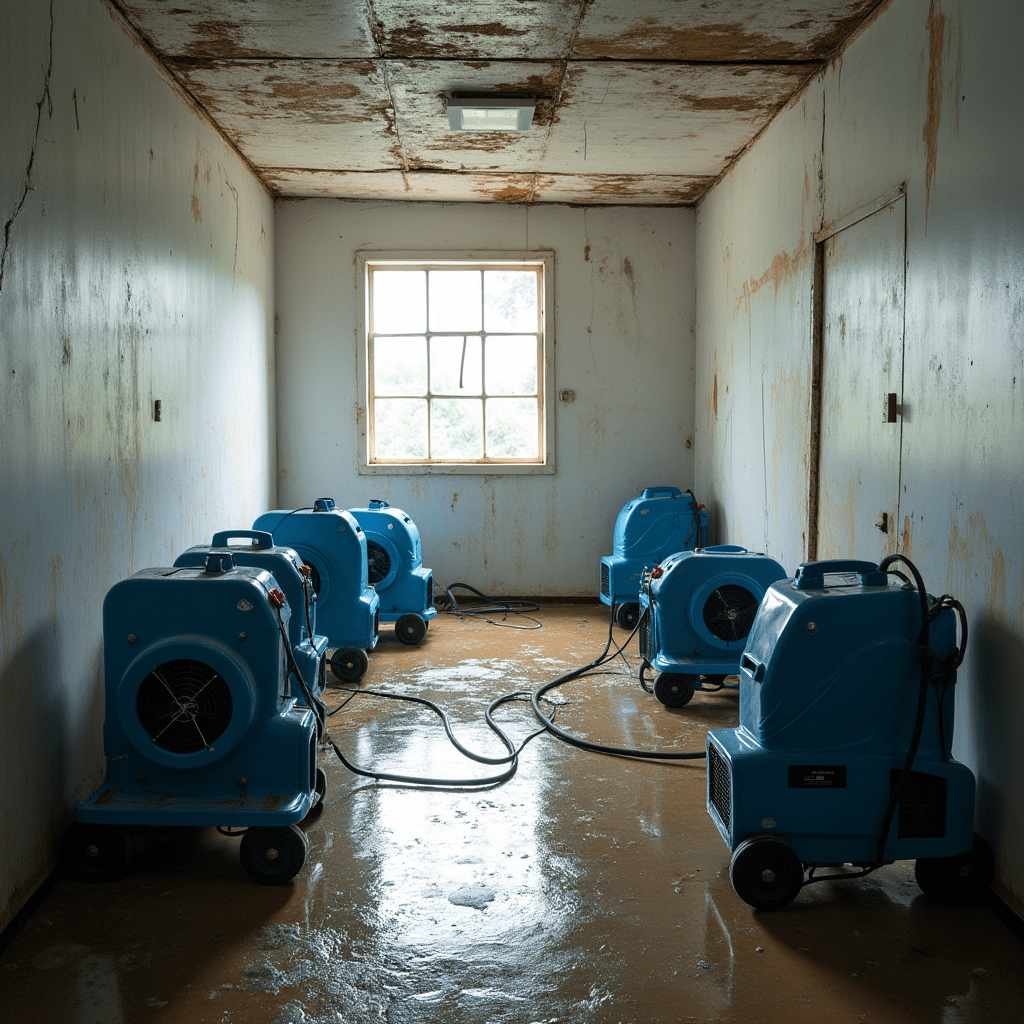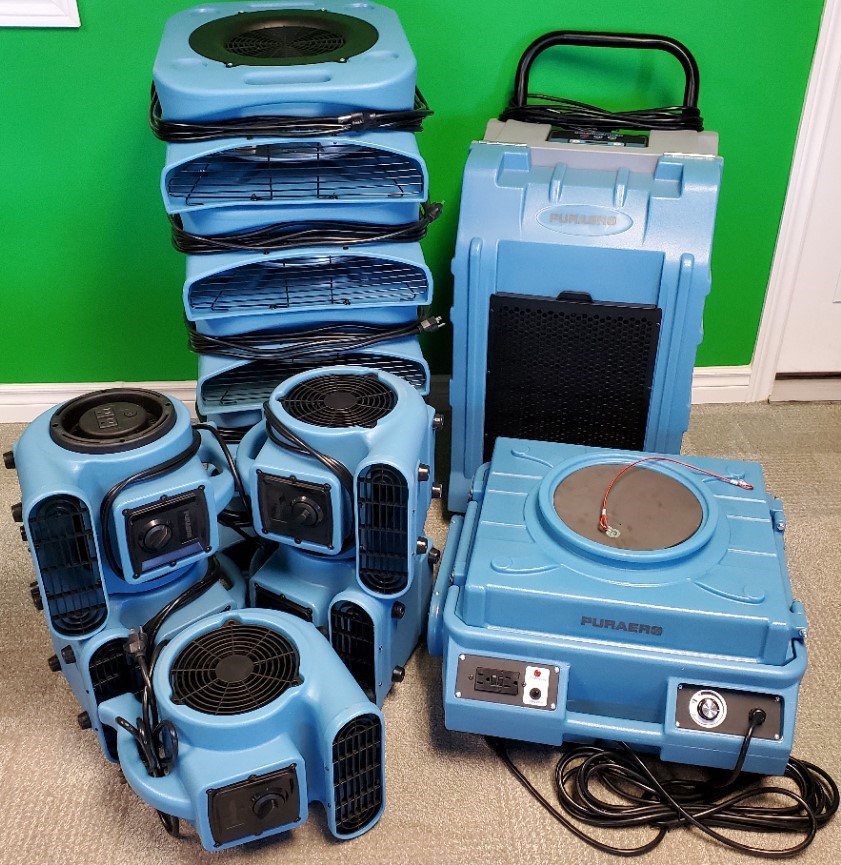
The Best Equipment To Improve Indoor Air Quality After A Flood
The Best Equipment To Improve Indoor Air Quality After A Flood
By: Brothers Equipment And Supply
Flooding does more than just cause structural damage; it severely impacts indoor air quality. Excess moisture creates the perfect breeding ground for mould, bacteria, and airborne toxins, all of which pose health risks.
According to Health Canada, mould can begin growing within 24 to 48 hours after water exposure, leading to respiratory problems and long-term damage to a home’s air quality.
Restoring indoor air after a flood requires the right equipment to remove moisture, filter out contaminants, and eliminate harmful odours.
Understanding the best tools for the job can help homeowners and businesses quickly recover from water damage.
Let’s get right into it!
Why Indoor Air Quality Declines After A Flood
Excess moisture is the biggest contributor to poor air quality after a flood. When water soaks into carpets, walls, and flooring, it creates an environment where mould and mildew thrive.
The Canadian Centre for Occupational Health and Safety warns that prolonged exposure to mould spores can cause asthma attacks, chronic respiratory issues, and allergic reactions.
Floodwater also carries bacteria, sewage, and chemical contaminants, which become airborne as water evaporates. Even when the water is gone, lingering odours can indicate hidden moisture problems. The cleanup process itself can release dust, allergens, and other pollutants, making the air inside a flooded home or business hazardous to breathe.
Essential Equipment To Improve Indoor Air Quality After A Flood
Air Scrubbers And HEPA Filtration Systems
Air scrubbers are designed to capture and remove airborne contaminants, including mould spores, dust, and bacteria.
These machines work by pulling in polluted air, filtering out harmful particles, and then releasing clean air back into the space. High-Efficiency Particulate Air (HEPA) filters are essential in flood recovery as they capture 99.97% of airborne particles as small as 0.3 microns.
Using an air scrubber with a HEPA filter significantly improves air quality by removing allergens and toxins left behind by floodwaters. Homeowners dealing with severe water damage should look for industrial-grade HEPA air scrubbers to ensure maximum effectiveness.
Industrial Fans And Air Movers

Air circulation is key to speeding up the drying process and preventing mould growth. Industrial fans and air movers help push moisture-laden air out of the home while bringing in fresh air.
Axial fans are ideal for covering large areas, while centrifugal air movers are designed for targeted drying in specific locations.
Proper fan placement is important for effectiveness, as creating cross-ventilation helps improve airflow and reduces stagnant moisture.
Experts suggest positioning fans in doorways or windows to direct air outside while using dehumidifiers to pull moisture out of the air.
UV-C Light Purifiers
Ultraviolet germicidal (UV-C) light purifiers help eliminate bacteria, viruses, and mould spores from indoor air. These devices work by breaking down the DNA of harmful microorganisms, preventing them from reproducing.
UV-C light is commonly used in hospitals and medical facilities to maintain sterile environments, making it a valuable tool for flood restoration.
Homeowners looking to improve post-flood air quality should choose ozone-free UV-C purifiers to avoid releasing additional irritants into the air.
Activated Carbon Air Purifiers
One of the biggest complaints after a flood is the lingering musty odour caused by damp materials and mould growth. Activated carbon air purifiers are designed to trap odours, volatile organic compounds (VOCs), and chemical fumes.
Unlike HEPA filters, which remove solid particles, carbon filters absorb gases and pollutants that cause unpleasant smells.
Combining a HEPA air filter with activated carbon technology is one of the most effective ways to restore fresh indoor air after a flood.
Ozone Generators (With Caution)
Ozone generators can be effective at neutralizing odours, mould spores, and airborne bacteria, but they must be used with caution. Ozone is a powerful oxidizer that breaks down pollutants at a molecular level, but high concentrations can be harmful to humans and pets.
For this reason, ozone treatment should only be performed in unoccupied spaces, and rooms should be properly ventilated before re-entry. When used correctly, ozone generators can help eliminate stubborn flood odours and disinfect affected areas.
High-Powered Dehumidifiers
Dehumidifiers are one of the most important tools for improving air quality after a flood. They remove excess moisture from the air, preventing mould and bacteria from spreading.
A standard household dehumidifier may not be powerful enough for post-flood conditions, which is why many restoration professionals recommend commercial-grade dehumidifiers capable of removing large volumes of water from the air.
Desiccant dehumidifiers work particularly well in colder environments where condensation-based units may struggle. Experts recommend running a dehumidifier until humidity levels drop below 50% to prevent further mould growth.

Additional Tips To Improve Indoor Air Quality After A Flood
Opening windows and doors whenever possible helps flush out contaminated air and bring in fresh oxygen. Removing water-damaged materials such as carpets, drywall, and insulation prevents them from harbouring mould and bacteria.
Disinfecting all surfaces with an antifungal cleaner ensures that no lingering contaminants remain. Monitoring indoor humidity levels with a hygrometer can help homeowners determine when their space is sufficiently dry. Keeping humidity below 50% is the best way to prevent further air quality issues.
How To Choose The Best Equipment For Your Home
The right equipment for post-flood air restoration depends on the extent of water damage. For minor flooding, a combination of a household dehumidifier and an air purifier with a HEPA filter may be enough.
In severe cases, commercial-grade dehumidifiers, industrial fans, and air scrubbers may be necessary to remove excess moisture and airborne contaminants. Larger spaces require high-capacity equipment for effective drying and purification.
Homeowners who only need equipment for short-term use may consider renting restoration tools from professional services.
Frequently Asked Questions
What Is The First Step To Improving Indoor Air Quality After A Flood? The first step is removing excess moisture using industrial fans and dehumidifiers to prevent mould and bacteria from spreading.
How Long Should I Run A Dehumidifier After A Flood? A dehumidifier should run for at least 48 to 72 hours, or until the humidity level drops below 50%, to prevent mould growth.
Do Air Purifiers Help With Mould After A Flood? Yes, HEPA air purifiers and air scrubbers remove mould spores from the air, reducing the risk of respiratory issues and further contamination.
What Type Of Fan Is Best For Drying A Flooded Home? High-velocity air movers or axial fans are the best choices for circulating air and speeding up the drying process.
Can Ozone Generators Eliminate Flood Odours? Ozone generators can neutralize odours and kill airborne contaminants, but they should only be used in unoccupied spaces due to potential health risks.
What’s The Best Way To Get Rid Of A Musty Smell After A Flood? A combination of air scrubbers, activated carbon filters, and proper ventilation is the most effective way to eliminate musty odours.
How Can I Prevent Mould Growth After A Flood? Keeping humidity levels below 50%, drying out affected areas quickly, and using HEPA air filters to remove mould spores can prevent future mould growth.
Is UV-C Light Effective Against Flood Contaminants? Yes, UV-C purifiers can kill bacteria, viruses, and fungi, improving indoor air quality after water damage.
Can I Rent Air Purification Equipment Instead Of Buying It? Many disaster restoration companies offer rental options for dehumidifiers, air scrubbers, and industrial fans for flood recovery.
Why Is My Home Still Humid Even After Using A Dehumidifier? If humidity levels remain high, check for hidden moisture in walls or flooring and increase ventilation or use a higher-capacity dehumidifier.
Conclusion
Flooding can have long-lasting effects on indoor air quality, leading to serious health hazards, musty odours, and mould growth. Using the right equipment such as dehumidifiers, air scrubbers, HEPA filters, and industrial fans can speed up the drying process and restore clean, breathable air.
Investing in air purification after a flood ensures a safer and healthier indoor environment while preventing costly damage in the future. Addressing indoor air quality quickly and effectively after water damage helps homeowners breathe easier and recover faster.
